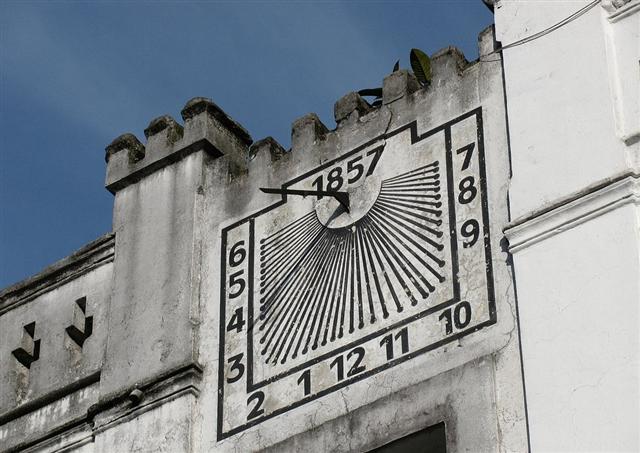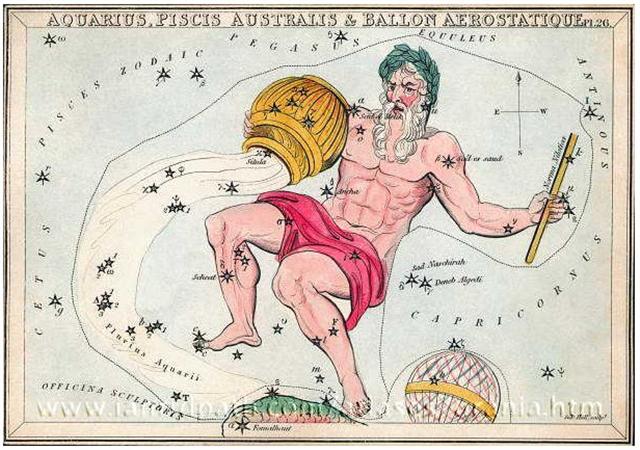Bb1.8
Between the end of the old year and the emergence of a new
one there should be an interval in the dark (●),
such was the cycle of the Moon.
... When the new moon appeared women assembled and bewailed
those who had died since the last one, uttering the following
lament: 'Alas! O moon! Thou has returned to life, but our
departed beloved ones have not. Thou has bathed in the waiora
a Tane, and had thy life renewed, but there is no fount to
restore life to our departed ones. Alas ...
This idea was then applied also to the cycle of the Sun:
... Nut, whom the Greeks sometimes identified
with Rhea, was goddess of the sky, but it was debatable if in
historical times she was the object of a genuine cult. She was
Geb's twin sister and, it was said, married him secretly and
against the will of Ra. Angered, Ra had the couple brutally
separated by Shu and afterwards decreed that Nut could not bear
a child in any given month of any year. Thoth, Plutarch tells
us, happily had pity on her. Playing draughts with the Moon, he
won in the course of several games a seventy-second part of the
Moon's light with which he composed five new days. As these five
intercalated days did not belong to the official Egyptian
calendar of three hundred and sixty days, Nut was thus able to
give birth successively to five children: Osiris, Haroeris
(Horus), Set, Isis and Nepthys ...
Could old clock faces have had a gap between 11 and 1? But modern
thought disregarded the face of the Moon, for the face of the
Sun was constantly illuminating - industrious light was leaving
no room for recreating life.

 |
 |
 |
 |
 |
 |
 |
|
Bb1-22 (443) |
Bb1-23 |
Bb1-24 |
→ 5 * 5 * 5 |
Bb1-26 |
Bb1-27 |
Bb1-28 (449) |
|
eko te manu kua mau - ki to
ahi |
kua haga - te mea ke |
kua hupe |
ma te maitaki |
kua rere te manu |
vae oho |
ku pepepepe te manu |
|
Hupee.
Mucus; hupeehupee, asthma. T Pau.,
Ta.: hupe, mucus. Churchill. Ta.: Hupe,
mucus. (Sa.: isupē,
id.) Ma.: hupe,
id. Churchill. Rhume, air froide.
Jaussen according to Barthel.
Pepe. 1. A sketch. 2. Bench, chair,
couch, seat, sofa, saddle; here pepe,
mau pepe, to saddle; noho pepe, a
tabouret. Pepepepe, bedstead. 3. Pau.:
butterfly. Ta.: pepe, id. Mq.: pepe,
id. Sa.: pepe, id. Ma.: pepe, a
moth; pepererau, fin, Mgv.: pererau,
wing. Ta.: pereraru, id. Ma.: parirau,
id. Harepepe, kelp. Here pepe, to
saddle. Churchill. Sa.: pepe, a
butterfly, a moth, to flutter about. Nukuoro,
Fu., Niuē, Uvea,
Fotuna, Nuguria, Ta., Mq.: pepe,
a butterfly. Ma.: pepe,
a grup, a moth; pepepepe,
a butterfly; pepeatua,
a species of butterfly. To.: bebe,
a butterfly. Vi.: mbèbè,
a butterfly. Rotumā: pep,
id. Churchill 2. Mq.: Pepepepe,
low, flat. Ha.: pepepe, id. Churchill. |
|
VISIBLE CLOSE
TO THE FULL MOON: |
|
22h (334.8)
KAE
UH (Roof) = ο Aquarii
(334.0),
AL
KURHAH (White Spot) = ξ Cephei (334.4),
SADALMELIK
(Lucky King) = α Aquarii,
AL DHANAB (The Tail) = λ Gruis
(334.6), ι Aquarii, ν Pegasi (334.7)
*293.0 = *334.4 - *41.4 |
ι
Pegasi (335.0),
ALNAIR (The Bright One) =
α
Gruis
(335.1),
μ
Piscis Austrini,
υ
Piscis Austrini (335.3),
WOO (Pestle) =
π
Pegasi
(335.7),
BAHAM =
θ
Pegasi (Good Luck of the Two Beasts),
τ
Piscis Austrini (335.8) |
ζ
Cephei (336.2),
λ
Cephei (336.3), -/270 Lac.
(336.7), λ Piscis Austrini (336.8) |
μ
Gruis (337.0),
ε
Cephei (337.2), 1/325 Lac. (337.3),
ANCHA (Hip) =
θ
Aquarii (337.4),
ψ
Oct.
(337.5), α Tucanae (337.9)
*296.0 = *337.4 - *41.4 |
Al Sa'ad al Ahbiyah-23
(Lucky Star of Hidden Things) /
Shatabisha-25 (Comprising
a Hundred Physicians)
ε
Oct. (338.1),
ρ Aquarii
(338.2), 2/365 Lac. (338.5),
SADACHBIA =
γ
Aquarii
(338.6),
π
Gruis (338.9) |
β/172
Lac. (339.2),
4/1100 Lac. (339.4),
π Aquarii
(339.5)
*298.0 = *339.4 - *41.4
CASTOR (α
Gemini)
|
δ
Tucanae (340.1),
ρ
Cephei (340.2),
ν
Gruis (340.3),
ζ
Aquarii,
δ
Gruis (340.4),
5/1100 Lac.
(340.7), σ Aquarii, 6/650 Lac. (340.9)
*299.0 = *340.4 - *41.4
PROCYON (α
Canis Minoris) |

... Horapollo, the grammarian of Alexandria,
about AD 400, tells us that the crane was the
symbol of a star-observer in Egypt
... Grus has as an alternative name
Flamingo (a name which sounds quite similar to
that of the bird Phoenix) which obviously is
based on 'flame'. Phoenicopterus (the
Flamingo) is characterized by its red feathers.
Wikipedia: ... from Greek
φοινικόπτερος
meaning 'purple wing'. Purple is the colour for
kings and 'phoenix' should therefore mean
'purple, the colour of the king' ... |
| Febr 18
(414) |
19 |
20 (*336) |
21 |
22 (447 - 29) |
23 (Terminalia) |
24 (420) |
|
DEC 16 (350) |
17 |
18 |
19 |
20 |
21 (SOLSTICE) |
22 (420 - 64) |
 |
 |
 |
 |
|
421 + 29 = 450 |
Bb1-30 |
Bb1-31 |
Bb2-1 (32) |
|
VISIBLE CLOSE TO
THE FULL MOON: |
|
υ Oct. (341.0), α/91 Lac. (341.1),
HOMAN (Hero) = ζ Pegasi,
β Piscis Austrini (341.2), ν Tucanae (341.5),
υ Aquarii
(341.9) |
η Aquarii
(342.1),
σ Gruis
(342.4),
SITULA (Water-jar)
= κ Aquarii
(342.7)
*301.0 = *342.4 - *41.4 |
ε Piscis Austrini (343.5), ο Pegasi, β Gruis (343.8) |
ρ Gruis (344.0),
MATAR (Rain) = η Pegasi
(344.2), η Gruis (344.6), β Oct. (344.7) |
|
Febr 25 (421) |
26 (451 - 29) |
27 |
28 (360 + 64) |
|
421 = number of
glyphs on side a of the tablet.
422 = 396 + 26.
423 = 4 * 91 + 2
* 29½.
424 = 392 + 32
= 364 + 28 + 32 = 364 + 60 = 365 + 59. |
|
DEC 23 |
X-MAS EVE |
25 (359) |
26 (177 + 183) |
|
INVISIBLY CLOSE
TO THE SUN: |
|
JUNE 23 |
ST JOHN'S DAY |
25 (176) |
26 (6 * 29½) |
The glyphs to be counted were ending with Situla. For
here the Sun had reached JUNE 24 (175 = 180 - 5) and then came
the dark days.
... The month, which takes its name from Juppiter the oak-god,
begins on June 10th and ends of July 7th. Midway comes St.
John's Day, June 24th, the day on which the oak-king was
sacrificially burned alive. The Celtic year was divided into two
halves with the second half beginning in July, apparently after
a seven-day wake, or funeral feast, in the oak-king's honour ....


|









